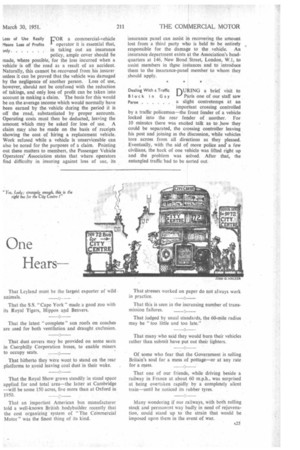One
Page 27

If you've noticed an error in this article please click here to report it so we can fix it.
Hears—
That Leyland must be the largest exporter of wild animals.
That the S.S. "Cape York" made a good zoo with its Royal Tigers, Hippos and Beavers.
That the latest "complete" sun roofs on coaches are used for both ventilation and draught exclusion.
That dust covers may be provided on some seats in Caerphilly Corporation buses, to enable miners to occupy seats.
That hitherto they were wont to stand on the rear platforms to avoid leaving coal dust in their wake.
That the Royal Show grows steadily in stand space applied for and total area—the latter at Cambridge —will be some 150 acres, five more than at Oxford in 1950.
That an important American bus manufacturer told a well-known British .bodybuilder recently that the cost organizing system of "The COmmercial Motor" was the finest thing of its kind. That stresses worked on paper do not always work in practice.
That this is seen in the increasing number of transmission failures.
That judged by usual standards, the 60-mile radius may be "too little and too late."
That many who said they would burn their vehicles rather than submit have put out their lighters.
Of some who fear that the Government is selling Britain's soul for a mess of pottage—or at any rate for a mess. 0 That one of our friends, while driving beside a railway in France at about 60 m.p.h., was surprised at being overtaken rapidly by a completely silent train—until he noticed its rubber tyres.
Many wondering if our railways, with both rolling stock and permanent way badly in need of rejuvenation, could stand up to the strain that would be imposed upon them in the event of war.












































































